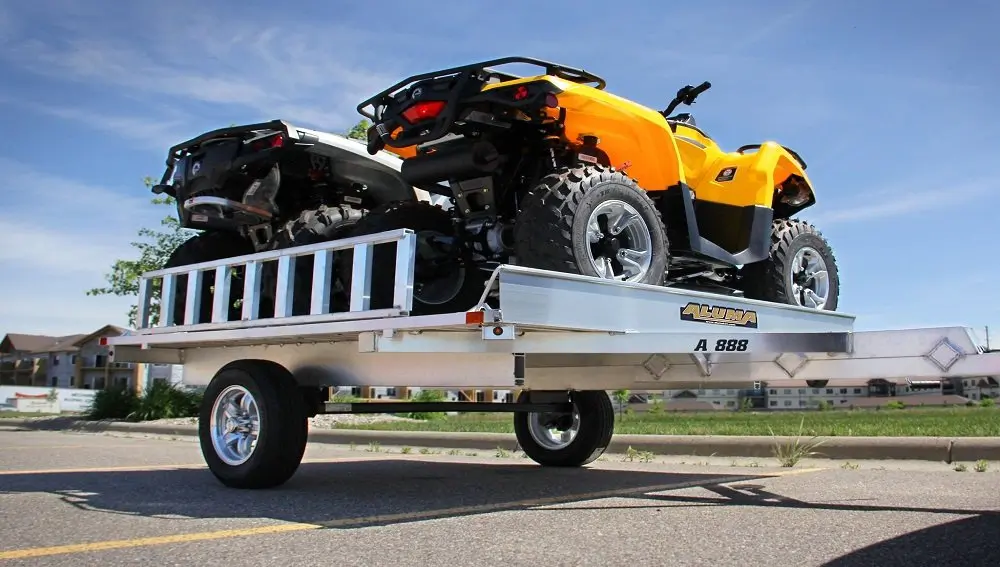Transporting your ATV (All-Terrain Vehicle) or UTV (Utility Terrain Vehicle) can be a daunting task, especially if you’re moving across state lines or planning an off-road adventure in a distant location. Whether you’re relocating, selling, or simply looking to explore new trails, understanding the ins and outs of ATV/UTV transportation and shipping is essential. Here’s everything you need to know to ensure a smooth and hassle-free experience.
- Assess Your Transportation Needs: Determine the purpose of transporting your ATV/UTV and your specific requirements. Are you moving to a new location, participating in a race or event, or selling your vehicle to a buyer in another state? Understanding your transportation needs will help you choose the most suitable shipping method.
- Choose the Right Shipping Method: There are several options available for transporting your ATV/UTV, including:
- Open Trailer: Ideal for short-distance transportation or when cost-effectiveness is a priority. Your vehicle will be exposed to the elements but is securely strapped to the trailer.
- Enclosed Trailer: Provides additional protection from weather, road debris, and theft. Recommended for long-distance transportation or valuable vehicles.
- Door-to-Door Service: Offers the convenience of pickup and delivery directly from your location. Ensure that the transportation company has access to suitable loading and unloading areas.
- Research ATV/UTV Transportation Companies: Look for reputable transportation companies with experience in handling ATV/UTV shipments. Consider factors such as licensing, insurance coverage, customer reviews, and pricing. Request quotes from multiple companies to compare services and costs.
- Prepare Your ATV/UTV for Transport: Before shipping your ATV/UTV, take the following steps to ensure a smooth and safe transportation process:
- Clean your vehicle to remove dirt, mud, and debris.
- Check for any leaks, mechanical issues, or damage.
- Remove any loose or aftermarket accessories that could become detached during transit.
- Securely fasten all movable parts, such as handlebars, steering wheels, and suspension components.
- Disconnect the battery and ensure that the fuel tank is no more than a quarter full to reduce the risk of leakage.
- Schedule Pickup and Delivery: Coordinate with the transportation company to schedule the pickup of your ATV/UTV and its delivery to the desired destination. Provide accurate addresses, contact information, and any specific instructions to facilitate smooth communication and logistics.
- Review the Shipping Contract: Before finalizing the shipment, carefully review the terms and conditions outlined in the shipping contract. Pay attention to insurance coverage, liability, delivery timeline, and any additional fees or surcharges. Seek clarification on any aspects of the contract that are unclear or ambiguous.
- Track Your Shipment: Many transportation companies offer online tracking services that allow you to monitor the progress of your shipment in real-time. Take advantage of this feature to stay informed about the whereabouts of your ATV/UTV and receive updates on its estimated arrival time.
- Inspect Your ATV/UTV Upon Delivery: When your ATV/UTV arrives at its destination, inspect it thoroughly for any damage or discrepancies. Compare its condition to the documentation you prepared before shipping and note any new issues. If you discover any damage, report it to the transportation company immediately and document it with photographs.
By following these steps and working with a reputable ATV/UTV transportation company, you can ensure a smooth and stress-free experience when shipping your vehicle. Whether you’re moving, selling, or embarking on an adventure, proper preparation and attention to detail will help safeguard your ATV/UTV and ensure its safe arrival at its destination. Happy trails!

 (208)500-0001
(208)500-0001